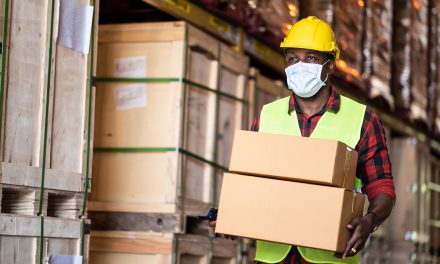The Missouri Rural Health Association (MRHA), in collaboration with the Health Resources and Services Administration (HRSA)/Office of Regional Operations Region 7, recently hosted a federal panel discussion on the rural health care response to the COVID-19 pandemic. All panelists discussed their role in serving as a bridge between rural communities and the agencies enacting policies and funding programs. Each agency prioritizes ensuring that rural communities have access to necessary resources and that unmet needs are brought to the attention of policy makers to fill those gaps. Throughout the COVID-19 pandemic, the greatest priorities for all panelists have been increasing access to health care services, sharing information and messaging tactics to control the spread of the virus and increase vaccination efforts, and to do it all through a lens of health equity. The overarching goal of all agencies involved is to ensure socially vulnerable and underserved communities receive the help they need and often do not get.
The panel was facilitated by Melissa Van Dyne, Executive Director of MRHA, and featured panelists representing several agencies. Among the agencies that participated are the Administration for Community Living (ACL), Centers for Disease Control and Prevention (CDC), Centers for Medicare & Medicaid Services (CMS), Federal Emergency Management Agency (FEMA), U.S. Department of Housing and Urban Development (HUD), Office of the Assistant Secretary for Health (OASH), Substance Abuse and Mental Health Services Administration (SAMHSA), and the U.S. Department of Agriculture (USDA). Panelists shared their agency’s COVID-19 response efforts, specifically focusing on rural Missouri, and highlighted upcoming funding opportunities, current priorities, and future initiatives in rural health.
Rural Response to COVID-19
“Since the onset of the COVID-19 pandemic, HRSA has been at the forefront of the response,” said Nancy Rios, Regional Administrator of HRSA Office of Regional Operations Region 7. In 2020, HRSA provided $2.2 million to various programs supporting relief efforts including provider reimbursements and relief for rural critical access hospitals. Three Missouri health centers are currently participating in a program helping expand vaccination efforts, a program which Rios hopes more Missouri centers will take advantage of. “Today through this program, we have vaccinated 1.5 million people,” she said.
In her panel introduction, Rios summarized HRSA’s breadth of work providing health care to people who are geographically isolated or otherwise unable to access quality care. Rios and the Region 7 office provide on the ground outreach to increase awareness of HRSA’s programs and funding opportunities. They also work to connect the full circle, gathering and assessing local feedback about rural health issues and providing that to stakeholders, partners, and policymakers to help address rural health gaps on a broader scope.
Regional Health Administrator of OASH Dr. Catherine Satterwhite establishes similar networks, bringing concerns from people in rural communities to state and local health departments and currently, the CDC. Together they and other partners helped develop the plan to vaccinate Missourians and continue to promote health for all. OASH worked closely with the health department’s public information officer to share Missouri’s strong vaccination messaging, particularly easily accessible and digestible messages on social media, with other states to expand vaccination success.
According to CDC’s Alexis Beyer, currently working on detail for the Office of the Assistant Secretary for Preparedness and Response (ASPR), CDC took Missouri’s efforts as a best practice example to other communities, identifying and prioritizing areas where people had to travel five miles or more for a vaccine. Beyer partners with state immunization programs to roll out vaccines to all areas with a focus on rural populations and health equity. “One of the things we were able to do in Missouri was provide the Communities in Need report,” said Beyer’s colleague Mary Greer from CDC’s Racial Disparities in Immunization Team. “The report provides information on social vulnerabilities at the county level so health policy makers can see which areas need support, more vaccine sites, mobile efforts, and more.”
To supplement Missouri’s vaccination efforts, FEMA supported several grant programs as well as provided direct federal assistance through tangible supply donations. “Each state opened a warehouse to coordinate and deliver PPE to those doing statewide vaccination efforts,” said Dan Best, Division Director for FEMA. “We want to ensure that all Americans have access to the vaccine including areas that are underserved and have a high social vulnerability.” In early April 2021, FEMA opened several federal pilot community vaccination centers in underrepresented communities including St. Louis as a direct effort to get people vaccinated. The agency has also provided extra health care personnel especially in rural areas to supplement staff as burnout continues to take a toll on small rural hospitals.
Overall, the agency responses to the pandemic focused on collaboration, communication, and direct relief. “The key that we found is creating partnerships early, even those you may not consider a traditional partner, and communication between channels – making sure that we’re sharing, sharing, sharing,” said Lacey Boven, Regional Administrator for the Administration for Community Living (ACL). “While it may be overwhelming, it’s better that we get the information out.” The ACL supports a nationwide network of local, state, and national services including nutrition, in-house support, caregiver support, research and advances for independent living, transportation, and more.
Transitions in Telehealth
To reduce the spread of COVID-19, many health care providers looked to creative solutions to treat patients without meeting in person. The pandemic brought implementation and growth of telehealth services to keep providers and patients connected virtually, a change likely to continue expanding. Anita Lopez, Asset Risk Coordinator for USDA’s Rural Development Community Facilities Program, and Chris Collins, a General Field Representative for USDA, discussed the agency’s various roles in implementing and developing broadband and telecommunications services in rural areas.
According to Lopez, USDA’s four priorities throughout the past year have been controlling COVID-19, ensuring racial equity, addressing the climate crisis, and increasing telecommunication. Lopez works with field officers like Collins to provide direct COVID-19 relief where they can. Collins works within the telecommunications program of the Rural Utilities Service across Missouri and Illinois, meeting with organizations to help create a plan for addressing telehealth needs and guiding them through that process.
HRSA-funded telehealth resource centers played a role in expanding telehealth access through information and relief. The two national centers focus on policy and technology while the regional ones provide technical assistance on the ground to partners interested in expanding or implementing telehealth services. “We have awarded more than $2.5 million to grants and other funding mechanisms including increasing access to telehealth, telehealth services, and training of providers,” Rios of HRSA said. HRSA also helped establish two new resource platforms, telehealth.hhs.gov and providerbridge.org, to connect providers to state agencies to quickly increase access for patients in rural areas.
Telehealth expansions were also made easier on providers through financial relief from CMS. “The amount of covered telehealth services we will reimburse is amazing,” said Michelle Wineinger, Rural Health Coordinator for CMS. “The flexibility for the rural hospitals and federally qualified health centers (FQHCs) was crucial to making sure rural patients received care, but also trusted care.” CMS helped waive telehealth requirements for practitioners due to the public health emergency, allowing providers to meet demand especially during staffing shortages as well as allow patients to talk with a provider virtually rather than only over the phone.
Already utilizing telehealth services, SAMHSA focused on sharing best practices with other areas. “We have created a telehealth guidebook for behavioral health that will be released very soon,” said Kimberly Nelson, Regional Administrator of SAMHSA. The book will include information specific to rural areas and will focus on an integrated approach to physical and behavioral health care. Whole-person care under one roof is crucial as many physical and behavioral health problems coexist, especially in communities with high substance use. Substance use can complicate or worsen existing physical and mental health concerns and has been on the rise steadily since the beginning of the pandemic.
To combat whole-person health concerns, significant increases in relief dollars have gone to states’ most in need communities through COVID-19 relief funds. “We know we’re seeing increases unfortunately in suicide as well as drug overdoses, so we have suicide prevention funding included in the COVID-19 funding going out the door.” According to Nelson, SAMHSA is also in a two-year transition to establishing 988 as a national suicide prevention lifeline, similar to 911. The start date for the lifeline is currently set for July 16, 2022.
Upcoming Projects and Funding Opportunities
Lopez announced that in addition to the USDA’s ongoing Community Facilities Programs, which assist with health care equipment and infrastructure projects, President Joe Biden’s American Rescue Plan will provide relief as well as expand vaccinations. “This is a little different than our regular grant programs because these funds can increase COVID-19 vaccinations, provide drug or medical supplies, reimburse for COVID-19 related expenses and lost revenue, help maintain capacity during the pandemic, construct structures for vaccination or testing, and engage in any other efforts to combat the COVID-19 pandemic.”
The American Rescue Plan aims to change the course of the pandemic and provide direct relief to American workers. The plan highlights several priorities including containing COVID-19 through vaccination efforts, safely reopening schools, providing financial support and childcare services for families hit hardest, and supporting communities struggling in the wake of the pandemic. As part of the latter, the plan will “distribute more than $360 billion in emergency funding for state, local, territorial, and Tribal governments to ensure that they are in a position to keep front line public workers on the job and paid, while also effectively distributing the vaccine, scaling testing, reopening schools, and maintaining other vital services.
Several panelists echoed the goals of the American Rescue Plan in regard to their own agency priorities. Bruce Ladd, Deputy Regional Administrator at HUD, said the plan includes $5 billion allocated for housing relief including vouchers and rental assistance. Best from FEMA said the program also looks to the future of vaccine efforts, specifically addressing the age requirement for the COVID-19 vaccine. “When the vaccine is developed for those 16 years and under, the next steps are to vaccinate those people – children under that age still account for a third of the population.” Best also said if a children’s vaccine is not developed by fall, major efforts will need to be made to safely reopen schools.
Additional upcoming opportunities include two SAMHSA grants. First Responders – Comprehensive Addiction and Recovery Act Grants allow first responders to administer medication to prevent overdoses and applications are due by May 17; Community Mental Health Centers (CMHC) Program supports mental health center services through COVID-19 emergency funds and applications are due May 21.
USDA currently offers the Distance Learning and Telemedicine Grant Program closing June 4. DLT funds equipment for health care and educational organizations as well as any entities implementing or expanding telehealth. “Even though the money provided through these programs isn’t specific to COVID-19 relief, it’s still necessary for rural health care,” Collins said.








